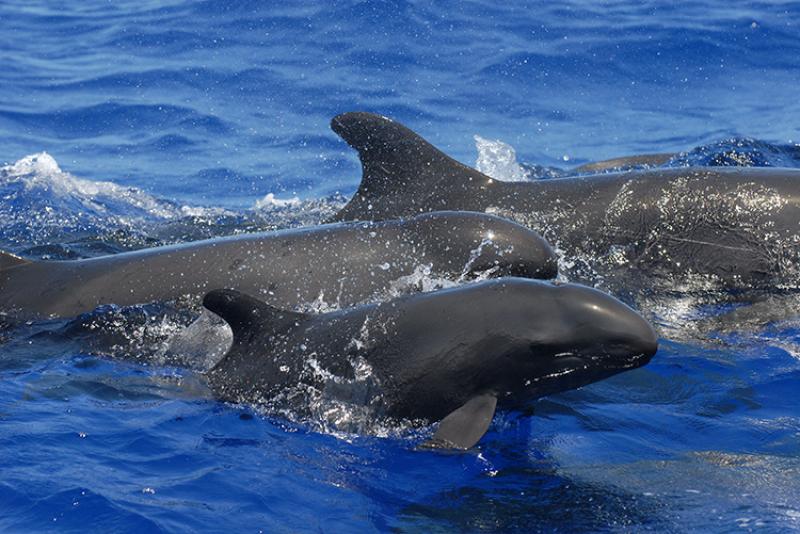Over the past decade, researchers have determined that false killer whales around the Hawaiian Islands have three distinct populations, one of which is endangered. In a collaborative effort led by Yvonne Barkley, researchers recently used underwater microphones to investigate their whistle vocalizations. They examined these vocalizations to see if they could distinguish between each population. Learning more about the complexity or diversity of their calls would help scientists study their social behavior and support the species’ protection.
False killer whales are a large, highly social dolphin species found throughout the Hawaiian archipelago. A combination of photographic, genetic, and satellite tag data determined that the three populations are genetically distinct and sympatric. This means each population is genetically different within the same geographic area:
-
The endangered population associated with the main Hawaiian Islands.
-
A population associated with the Northwestern Hawaiian Islands.
-
A pelagic population dispersed throughout offshore waters.
Scientists do not yet know the exact reasons why these false killer whale species separated.

Each population is managed separately due to differences in their behavior and ecology, as well as the threats that they face. While the main Hawaiian Islands population is endangered, the pelagic population interacts most with fisheries. Still, the differences between the three populations are not fully understood. Like many highly social species, false killer whales rely heavily on vocal communication for foraging, navigation, and social behaviors. This makes them an ideal species to study using passive acoustic methods.
For this study, researchers towed underwater microphones, or hydrophones, behind a ship to collect passive acoustic data during several whale and dolphin research surveys. Barkley and coauthors selected hundreds of false killer whale whistles from the recordings and measured 50 different characteristics from each whistle. They fed these whistle measurements into a machine-learning classification algorithm called “random forest” to see if it could correctly identify each whistle to a population.

The study showed that the whistle characteristics of each population were too similar for the random forest classifier to distinguish them. However, it correctly classified whistles from the main Hawaiian Islands population more often than the other populations. This suggests that differences in whistle characteristics do exist between the smaller endangered population and the larger populations. While the classifier did not perform as expected, the researchers gained new insight into patterns within the whistle characteristics. They can use this information to improve future acoustic classification studies for false killer whales.



